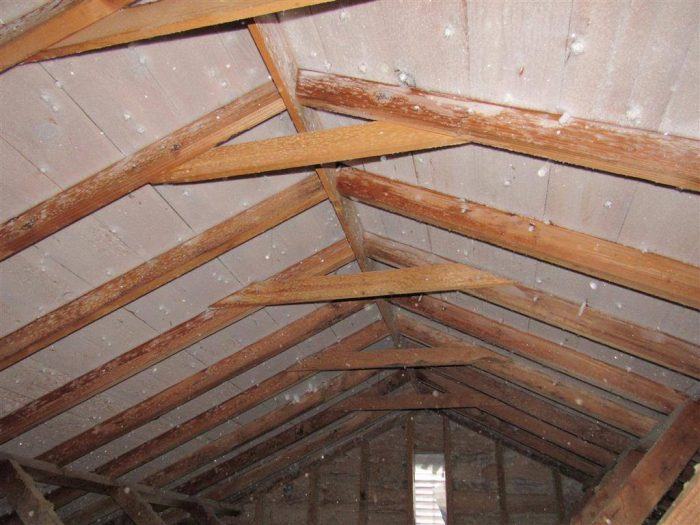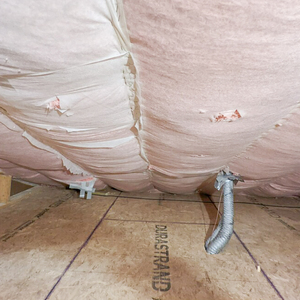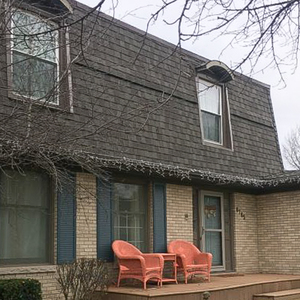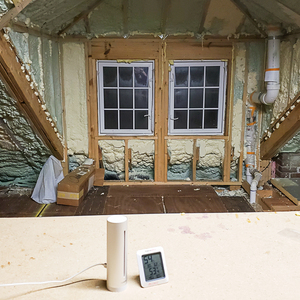
Five years ago, “MattJE” bought a house in Climate Zone 5A. The attic was mold-infested at the time, as he explains in this Q&A post. He had the mold cleaned out and replaced the plastic baffles that create a ventilation channel from soffit to ridge. Then he installed cellulose insulation. Additionally, the general contractor moved bathroom vents from the soffits to the roof, and replaced all the can lights with LED retrofits. Later that year, the entire roof was replaced; the new roof assembly included an Ice & Water Shield underlayment.
Despite all those efforts, the mold has returned, mostly around the baffles. Evidence of water is everywhere. The roofing nails that protrude through the roof deck are rusty; and there’s water on the exterior wall top plates and condensation on the underside of the baffles. There are no apparent leaks in the roof. However, he thinks the ridge vent was cut too wide (3-in. on either side of the ridge), and wonders if it’s causing an imbalance in the airflow. (The existing soffit is vented every three rafter bays.) Thermal imaging didn’t reveal any areas of heat entering the attic from below.
MattJE writes that he intends to install soffit vents at the bottom of every rafter bay, and to get rid of the mold (again). In spite of conversations with roofers, insulation contractors, and mold remediation companies, he’s no closer to finding a solution to his moldy attic problem.
So, what’s causing the recurring mold, and how can future growth be prevented? We will sleuth a solution in this Q&A Spotlight.
Warm air + cold surfaces = condensation (and mold)
Responses to MattJE’s dilemma all center around air leakage. Both “freyr design” and Michael Maines think the problem stems from moist…
Weekly Newsletter
Get building science and energy efficiency advice, plus special offers, in your inbox.

This article is only available to GBA Prime Members
Sign up for a free trial and get instant access to this article as well as GBA’s complete library of premium articles and construction details.
Start Free TrialAlready a member? Log in















2 Comments
Yes, fully vented soffit, vent every rafter space with meticulous attic air sealing. Has worked in MN for many years, no attic moisture or ice dams.
Doug
There are a few other components that can help Kohto's solution work. The soffit is probably the limiting factor in how much ventilation net-free area there is at the bottom of the rafter bays. There may need to be more/larger openings created in the soffit to balance the net-free area away from the ridge and toward the lower "supply" openings.
If the house if very leaky in the basement this would increase the pressure on the ceiling of the upper level, accelerating leakage through whatever holes there are to the attic. Air seal the basement, but make sure chimneys still draft well if you have chimney vented heating or water heating.
Finally, check the basement for sources of moisture. I expect MattJE would have mentioned indoor condensation if that is prevalent. Nevertheless, reducing large sources of interior moisture can only help the situation, so do something about a wet basement.
Li Ling
Log in or become a member to post a comment.
Sign up Log in